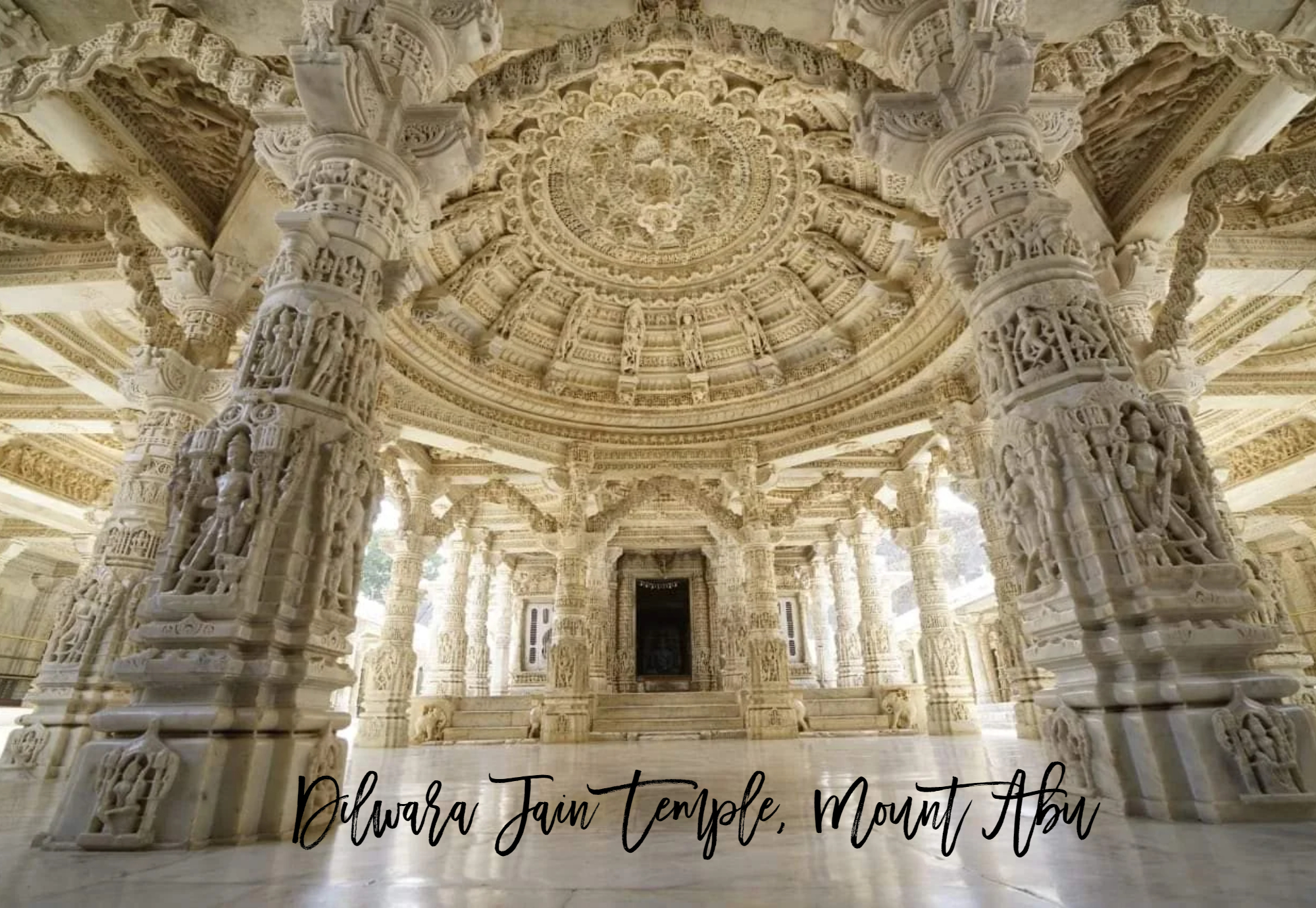
Marvel at the exquisite architecture and intricate marble carvings of these 11th to 13th-century temples, showcasing unparalleled craftsmanship.
Information About Dilwara Jain Temple, Mount Abu:
| ASPECT | DETAILS |
|---|---|
| Location | Mount Abu, Rajasthan, India |
| Dedicated to | Jain Tirthankaras (primarily Rishabha, Neminatha, Parshva, and Mahavira) |
| Construction Period | Between the 11th and 13th centuries |
| Architectural Style | Exquisite marble carvings and intricate craftsmanship. |
| Temple Complex | Comprises five temples: Vimal Vasahi, Luna Vasahi, Pittalhar, Parshvanatha, and Mahavir Swami. |
| Vimal Vasahi Temple | Dedicated to the first Jain Tirthankara, Lord Rishabha. Known for its magnificent architecture and detailed marble carvings. |
| Luna Vasahi Temple | Built by two brothers, Vastupal and Tejpal, it’s dedicated to Lord Neminatha. Features stunning marble work and intricate designs. |
| Pittalhar Temple | Revered for housing the idol of the first Jain Tirthankara, Lord Rishabha, made of ‘Ashtadhatu’ (an alloy of eight metals). |
| Parshvanatha Temple | Houses the black-colored idol of Lord Parshvanatha, exquisitely carved from a single piece of marble. |
| Mahavir Swami Temple | Known for the idol of Lord Mahavira in a sitting posture. The temple showcases beautiful sculptures and ornate designs. |
| Intricate Artwork | Marble carvings depict scenes from Jain mythology, flora, celestial beings, and intricate geometric patterns. |
| Craftsmanship | Renowned for its intricate details and the skillful craftsmanship of artisans from a bygone era. |
| Historical Significance | Represents the pinnacle of Jain architecture and holds significant religious importance for the Jain community. |
| Visiting Hours | Generally open from morning till evening, subject to specific temple timings and religious ceremonies. |
| Entry Fee | Usually nominal, varying for domestic and international visitors. |
| Photography | Restrictions might apply; it’s advisable to check the guidelines before photography or videography within the temple premises. |
| Accessibility | Accessible by road from Mount Abu town; local transportation options like taxis or buses are available. |
| Guided Tours | Often available to provide insights into the temple’s history, architecture, and Jain traditions; inquire at the visitor center or local guides. |
| Recommended Attire | Modest clothing is encouraged as a mark of respect to the religious sanctity of the temples. |
| Cultural Significance | Reflects the rich heritage and religious practices of Jainism, drawing visitors for its spiritual ambiance and architectural grandeur. |
| Note | As a place of religious reverence, visitors are expected to maintain decorum and adhere to the rules and regulations within the temple premises. |
Comments